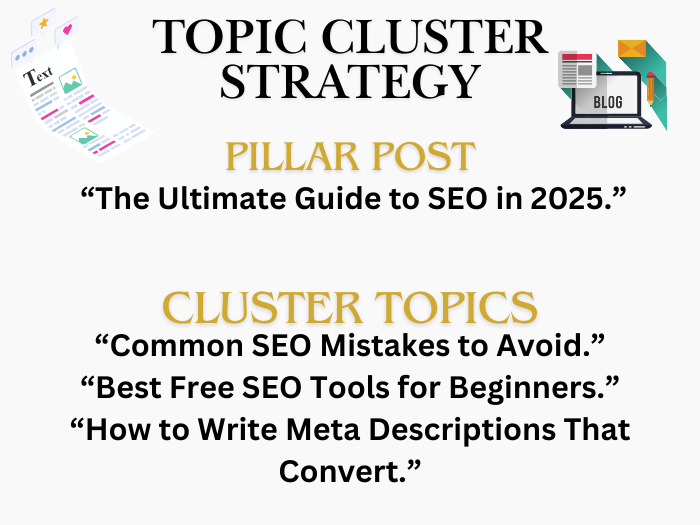SEO blog writing beats generic content creation by a long margin; it not only places articles in front of user’s eye but also ensures the content resonates and are of good quality. Making your blog visible through search engines is both helping in gaining free traffic and it offers a genuine service to the readers. In this post we shall examine the key tactics that would be helpful to increase the effectiveness and overall exposure of your blogs.
What is SEO Blog Writing?
SEO blog writing is the art of creating content optimized for search engines while addressing user intent. The aim is to rank higher in search results, drive organic traffic, and build a loyal audience.
Example: Suppose you own a fitness blog. Instead of just writing “How to stay fit,” an SEO-optimized blog would target a long-tail keyword like “Best 30-minute home workouts for beginners.” This approach caters to specific user queries and boosts search engine rankings.
Why Does SEO Blog Writing Matter?
Here are some reasons why SEO-optimized blogs are essential for traffic growth:
- Increased Visibility: Higher rankings mean more exposure to your target audience.
- Cost-Effective Traffic: Organic traffic is free, unlike paid ads.
- Authority Building: Well-researched blogs establish you as an expert in your niche.
- Improved Engagement: SEO encourages you to create content that aligns with readers.

Key Strategies for Writing SEO Blogs That Drive Traffic
1. Conduct Thorough Keyword Research
Why it Matters: Keywords are the backbone of SEO. They help search engines understand your blog’s topic and match it with user queries.
How to Do It:
- Use tools like Ahrefs, SEMrush, or Google Keyword Planner to identify relevant keywords.
- Focus on long-tail keywords (e.g., “how to write SEO blogs for beginners”). These are less competitive and more specific.
- Analyze keyword difficulty, search volume, and user intent.
Example:
For a blog targeting small businesses, consider keywords like “SEO tips for local businesses” or “how to rank on Google Maps.”
Pro Tip: Incorporate primary keywords naturally throughout your content, including in the title, meta description, headers, and body text. Avoid keyword stuffing, as it can harm your rankings.
2. High-Quality Content Creation
Why it Matters: Search engines reward detailed, well-researched content. Readers stay longer, boosting engagement metrics.
How to Do It:
- Aim for blog posts of at least 1,500 words. Posts exceeding 2,000 words often perform even better as told in an seo content length article by sweor.
- Focus on user intent. Address the specific questions or needs of your target audience.
- Include original research, statistics, or case studies to add credibility.
Pro Tip: Break the content into scannable sections using headings, subheadings, and bullet points.
Utilize Scannable Formats:
- Break up text with headings, bullet points, and short paragraphs to make content easier to scan. This caters to readers who skim articles rather than reading them in full
Write in an active voice to make your content more engaging and authoritative. This style conveys confidence and clarity in your writing.
3. Optimize On-Page SEO Elements
On-page SEO ensures your blog is structured in a way that search engines can easily understand.
Key Elements to Optimize:
- Title Tags: Include your primary keyword and make it compelling (e.g., “10 SEO Tips to Triple Your Blog Traffic in 2024”).
- Meta Descriptions: Write concise summaries with your target keyword to entice clicks.
- Headers (H1, H2, H3): Organize content into sections for clarity and SEO.
- Alt Text: Use descriptive alt text for all images to improve accessibility and rankings.
- Internal Links: Link to related content on your site, such as blogs, service pages, or guides.
Example: If your blog is about “SEO tips for small businesses,” link to a post like “Top 10 SEO Tools for Startups”.
Use Visual content for On-page SEO as it enhances the reader’s experience and improves engagement. Here’s A Visual Guide to Keyword Targeting and On-Page SEO.
What to Include:
Infographics: Simplify complex data with infographics.
Images: Use high-quality images with optimized alt text.
Videos: Embed explanatory videos to keep users engaged longer.
4. Understanding Search Intent
Understanding search intent ensures your blog meets the user’s expectations.
Types of Search Intent:
- Informational: Users are looking for knowledge (e.g., “top 15 essential blogging topics for photographers“).
- Navigational: Users want a specific website (e.g., “Google Analytics login”).
- Transactional: Users are ready to take action (e.g., “Buy SEO software”).
How to Use It:
Provide actionable advice for informational searches.
Match your content type (blog, listicle, guide) with the intent.
Example: If users are searching for “How to improve blog traffic,” provide actionable tips and real-life examples.
5. Build a Topic Cluster Strategy
A topic cluster strategy involves creating a “pillar post” and linking it to related subtopics.
Why it Works: It improves user experience and signals to search engines that your site is an authority on the subject.
Example:
- Pillar Post: “The Ultimate Guide to SEO in 2025.”
- Cluster Topics:
- “Common SEO Mistakes to Avoid.”
- “Best Free SEO Tools for Beginners.”
- “How to Write Meta Descriptions That Convert.”

Link these together to improve user experience and SEO.
6. Engaging Headlines
Headlines play a vital role in drawing attention. Headlines with 14-17 words tend to perform better in terms of social shares and engagement. Make sure each headline is clear, informative, and catches the reader’s interest. Your headline is the first thing readers see—it needs to stand out.
How to Create Great Headlines:
Keep it clear and concise.
Use numbers: “10 Proven SEO Strategies to Boost Traffic.”
Add power words: “Ultimate,” “Proven,” “Guaranteed.”
Here are 10 Simple rules to enhance readability to help you with writing clear headlines and content.
7. Promote Content Effectively
Creating great content isn’t enough; you need to promote it effectively.
Promotion Channels:
- Share on LinkedIn, Twitter, and Facebook. Join niche groups, like Facebook communities, to share content. Use hashtags and trending topics to expand your reach.
- Use email marketing to send newsletters. Offer free downloads (e.g., templates) to encourage signups. Send regular newsletters with valuable updates and blog links.
- Engage with niche communities like Reddit, Respond to comments and encourage discussions.
8. Guest Blogging
Writing guest posts for reputable blogs in your niche helps build backlinks and credibility. For example, contributing to a blog on SearchEngineJournal can improve both your reach and your SEO authority.
9. Optimize for Featured Snippets:
Featured snippets appear at the top of Google search results and can significantly increases visibility.
How to Optimize:
Include keywords naturally in your answers.
Use clear, concise answers.
Add lists, tables, or headers for structured data.

10. Regularly Update and Refresh Old Content
Google rewards websites that keep their content fresh and relevant.
How to Refresh Content:
- Update statistics and data.
- Add new sections or examples.
- Optimize old posts for new keywords.
Example: If you wrote about “SEO in 2024,” update it to include 2025 trends and tools.
Measuring SEO Blog Success
Track these metrics to gauge the performance of your blogs:
- Organic Traffic: Use Google Analytics to monitor traffic growth.
- Bounce Rate: Lower bounce rates indicate better engagement.
- Keyword Rankings: Check if your target keywords are climbing in SERPs.
- Backlinks: More backlinks signal credibility and authority.
Common Mistakes to Avoid
- Keyword Stuffing: Overloading content with keywords hurts readability and rankings.
- Ignoring Mobile Optimization: Ensure your site is mobile-friendly.
- Skipping Analytics: Regularly review metrics like bounce rates and clickthrough rates to refine your strategy.
FAQs About SEO Blog Writing
1. How long does it take to see results from SEO blogging?
Typically, it takes 3-6 months to see noticeable improvements. Here is a 3-month SEO plan to get you started and a 6-month SEO plan for long-term goals.
2. How often should I post blogs?
Consistency is key. Aim for at least 1-2 posts per week.
3. Is SEO blogging expensive?
SEO blogging can be cost-effective if done correctly. Investing in high-quality content and promotion yields long-term benefits.
4. Should I use paid ads alongside SEO?
Combining SEO with PPC can accelerate traffic growth, especially for new blogs.
Conclusion
This is where SEO blogging combines keyword research, quality content creation and promotion to increase visibility and organic growth. Knowing when audience intent is met, good, structured content focuses the value of each post not only for readers but also for the search engine.
Need help achieving your blogging goals? Join our SEO content writing services to help increase your overall website traffic.
